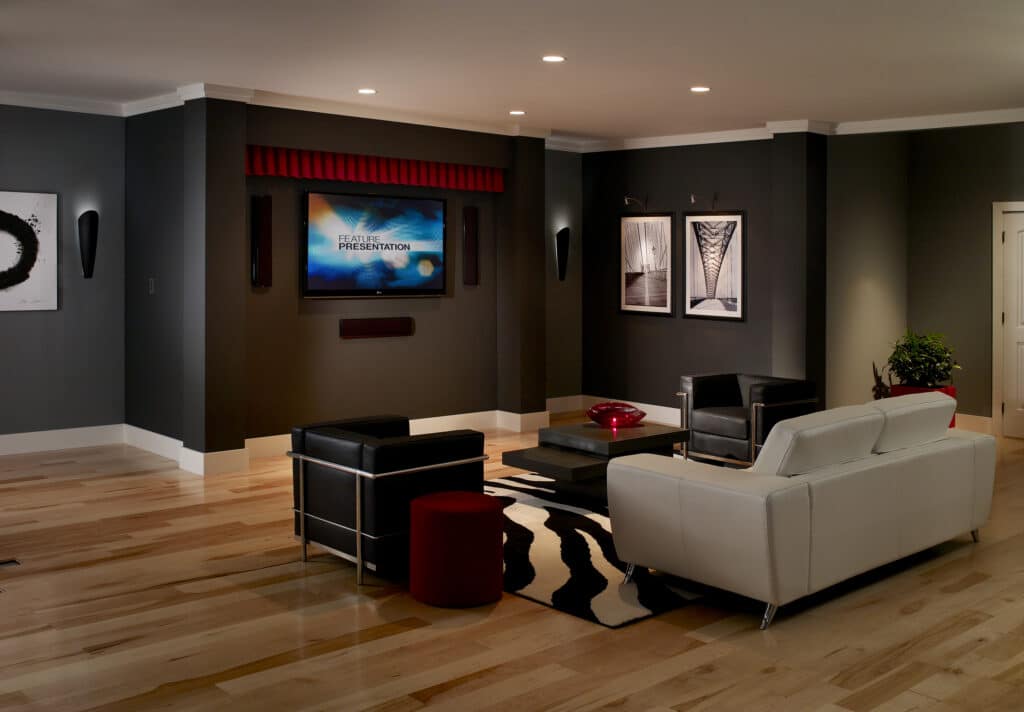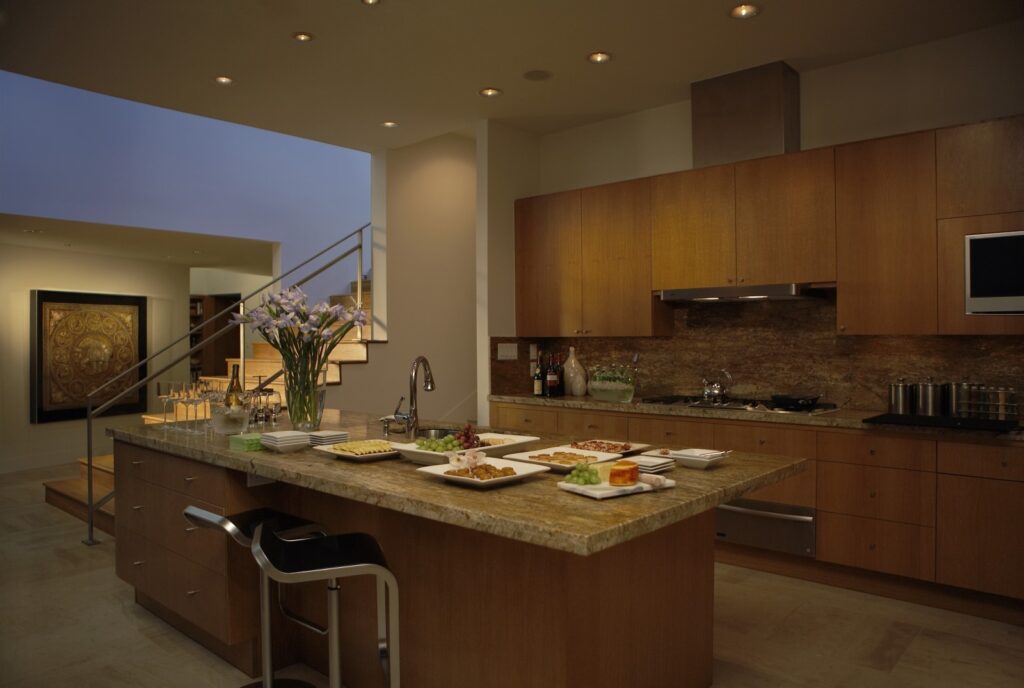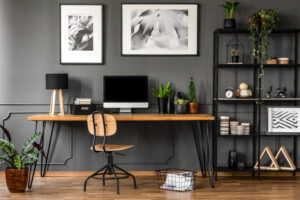There’s no question that architectural speakers and lighting fixtures can enhance the interior design of your home or office. By choosing the right products, you can create an inviting atmosphere that reflects your personal style. In this blog post, we will discuss some of the best architectural speakers and lighting fixtures on the market today. We will also provide tips for choosing the right products for your needs. So, if you are planning a high-end new build or retrofit, be sure to read our blog post!
Architectural Speakers and Lighting Fixtures Can Enhance Your Interior Design
When you are planning the architectural details of your home, you may want to consider adding architectural speakers and lighting fixtures. Both elements can enhance the beauty of your space and create a more beautiful and inviting space.
Architectural speakers can be used to add sound to any room in your home. They are designed to be discreet and blend in with your décor. You can use them to play music, or you can use them for home theater systems. Either way, architectural speakers can add a touch of elegance to your home.
Lighting fixtures can also be used to enhance your interior design. They can be used to accentuate certain features in your home, or they can be used to create a mood. There are many different types of lighting fixtures available, so you can find the perfect one for your needs.
Types of Architectural Speakers and Lighting Fixtures
Both architectural speakers and lighting fixtures can be used to make your home more beautiful and inviting. Homeowners should consider these design features when planning a new build or retrofitting their home. Adding these elements can add value and enhance any lifestyle.
Depending on the layout and design of your house, there are numerous ways to incorporate hidden features or architecturally stunning elements.
Architectural Speakers
There are several key distinctions between architectural speakers and conventional box speakers. An architectural speaker, for example, is embedded into a wall or ceiling, so it does an excellent job of keeping out of the way while still not intruding on your living space.
On the other hand, a box speaker is designed to be placed on a shelf or table. Box speakers are usually larger and more obtrusive than their architectural counterparts.
If you’re looking for a way to add premium sound to your home without sacrificing style, architectural speakers may be the right choice for you.
What are architectural speakers?

Architectural speakers, as the name suggests, are built into walls or ceilings, and have comparable components to those in a conventional box type speaker.
Shared components include:
- The tweeter
- Woofer
- Input binding posts
- Crossover network
Because architectural speakers lack a cabinet structure, they utilize a plastic baffle to keep the weight down and drywall mounting clips for installation.
Other components that may be included are:
- A directional tweeter
- Treble or bass mod switch
- Removable grille
- Installation kit or backer box
Because architectural speakers are meant to be put in a wall or a ceiling, they generally do not have a boxed enclosure.
This is an “infinite baffle” design, which simply implies that the walls and ceiling separate forward-firing sound waves from rear-firing sound waves. This is critical to prevent any phase issues in the sound quality since the soundwaves must be kept apart.
In-Ceiling Speakers
In-ceiling speakers are a specific type of architectural speaker that is designed to be installed in the ceiling. They are a terrific way to add sound to your home without sacrificing style.
Traditional ceiling models are round in form and range from 4 to 12 inches in diameter. One or two may usually be enough for music in small to medium-sized rooms but bigger rooms and multichannel systems need more.
In-ceiling speakers can be used for whole-house audio systems, home theater systems, or as part of a distributed audio system. They are perfect for rooms that have high ceilings because they will be less visible than traditional box speakers. Some ceiling speakers have rotatable tweeters that may be aimed precisely at the sitting area for a greater sound experience, and some even include adjustable woofers.
In-Wall Speakers
Though in-ceiling speakers provide a decent sound experience, in wall speakers take sound quality and immersion to another level. Because these speakers are ear-level, they create a sweet spot for listeners, which is great for home theaters or multi-channel systems.
There are many different speaker designs to choose from, and most in-walls may be used as left and right channels for a stereo or surround system.
The center channel, more so than any other component, is responsible for most of the spoken words and many of the special effects in movie soundtracks. Center channel speakers are usually horizontally oriented, with a tweeter in the middle and at least one woofer on both sides, allowing the dialogue to be heard in a greater listening area.
Surround speakers are generally positioned higher up on the wall behind the sidewalls and/or on the back wall. In wall subwoofers offer deep bass for a convincing home theater experience without taking up any precious floor space.
Sonance Architectural Series
Some companies have developed speakers that are completely hidden for the client who wants a clean design. Sonance has done just that.
The Sonance Architectural Series includes satellite speakers and subwoofers to create a more subtle aesthetic than conventional in ceiling loudspeakers while still providing superior sound coverage and quality.
The difference between the two versions is that these tiny speakers fit with the footprint of small aperture downlights for minimal distraction, since their totally flush and bezel-less grilles merge into the surrounding ceiling surface. Overall, a Sonance speaker produces great sound for both living room stereo sound and home movie theaters alike.
Pros and Cons of Architectural Speakers
Now that we’ve gone over the different types of architectural speakers, it’s time to discuss the pros and cons of using them in your home.
Pros:
- Virtually invisible speakers
- Reduces clutter
- Subtle aesthetics
- Immersive 3D sound and high performance
- Aimable tweeters and woofers
- Great for surround sound
- Distributed multi-room audio sound system
- Paintable grilles to match wall/ceiling
Cons:
- Can’t be moved after installation
- Upgrading is less feasible
- It’s more difficult to toe-in the stereo imaging sweet spot
- In the event of problems, resolving and testing these items is more difficult
Architectural Lighting

Architectural lighting is a form of interior design that is often overlooked, but it can have a huge impact on the overall look and feel of a room.
Architectural lighting design is a branch of architecture, interior design, and electrical engineering that focuses on the creation of lighting systems for human usage, such as natural light or electric light.
The design process accounts for:
- The type of human activity for which lighting is required
- The amount of light necessary
- The color of the light and its effect on certain objects and the environment as a whole
- How light is distributed in the space to be illuminated, whether indoors or outside
The goal of lighting design is to elicit a positive human response, in which the viewer can see well and without difficulty. The goal of architectural illumination design is to enhance the aesthetic appeal or experience of buildings and other physical structures.
The Concept of Architectural Lighting Design

The three main factors to achieve an effective balance between lighting and architecture are aesthetics, functionality, and efficiency.
Aesthetics
The way that light is used in architecture can affect how people see a building. Designers and architects focus on creating a good visual balance between lighting and architecture.
Functionality
Lighting should be designed in a way that does not cause glare or discomfort. It should also be bright enough to allow people to see what they are doing.
Efficiency
Sustainable design is essential when constructing architectural lighting, given the growing concern for our environment’s health. Using energy-saving LEDs is one way to achieve this.
Types of Architectural Lighting
Cove, soffit, and valance are three of the most popular architectural lighting styles.

Cove Lighting
Cove lighting is a type of lighting where light is directed towards the ceiling from one or more sides to spread the light evenly.
Cove lights are typically found in recesses, high on walls, ledges, and ceiling valences. It’s an indoor version of lighting that gained its popularity due to the fact that it not only hides but also creates a unique effect.
In this technique, the light may be directed in two ways: either up towards the ceiling or down where a different wall washing effect is created.
Types of Cove Lighting
- Rope Cove Lighting: This is a type of cove lighting where LED lights are strung together like ropes and then placed in a cove or tray.
- Panel Cove Lighting: This is a type of cove lighting that uses light panels to evenly distribute light.
- Direct Cove Lighting: This is a type of cove lighting where the LEDs are mounted directly on the structure.
- Ceiling Cove: This is a type of cove lighting where the LED lights are mounted in the ceiling.
- Wall Cove Lighting: This style is commonly built beneath a trim or wall lip and shines on the walls.
Cove lighting is the ideal solution for individuals with an artistic nature who wish to bring their creativity into their homes. In a space that is both fascinating and appealing, Cove lighting technology delivers a powerful overall impact.
Soffit Lighting
Soffit lighting is ideal for both indoor and outdoor use. Soffit lighting, unlike cove lighting, faces downward rather than upward, creating a wall-washing effect. Soffit lighting is used to illuminate soffits or cornices near the ceiling.
There are two types of Soffit lighting:
- In-Line Soffit Lighting: In-line soffit lighting is a type of recessed light that is mounted in the ceiling or wall and shines directly onto the soffit.
- Surface Mounted Soffit Lighting: Surface mounted soffit lighting is a type of light fixture that is mounted on the surface and shines down onto the soffit.
Soffit lighting fixtures are typically low profile, making them less noticeable and more aesthetically pleasing than other types of lighting fixtures.

Valance Lighting
Valance lighting, which is often on a wall and runs continuously, delivers upward and downward illumination. This design is ideal for a living room, bedrooms, and kitchens.
When used in combination with other types of lighting, Valance lighting can be very effective in highlighting certain features in a room. For example, valance lighting can be used to highlight a piece of artwork on a wall.
Valance lighting is available in a variety of styles, including:
Valance lighting is a versatile type of lighting that can be used in many different ways to enhance your home’s interior design.
Consider Your Interior Design Style When Choosing Options
When it comes to choosing architectural speakers and lighting fixtures, there are many factors to consider. The most important factor is the overall style of your home. You want to make sure that the fixtures you choose complement the rest of your home’s décor, while enhancing your experience in the space.
Another key factor to consider is the function of the room you are lighting. Are you trying to create a relaxing atmosphere in a bedroom or a more energetic atmosphere in a kitchen?
Other things to consider:
- If you have a modern and minimalist home, then sleek and simple cove or soffit lighting may be the best choice for you.
- If you have a traditional home with intricate details, then wall-washing valance lighting may be the better option.
- If you are looking for a unique and eye-catching effect, try direct cove lighting or rope cove lighting.
Once you have considered these factors, it’s time to start looking at the different options available. There are many different types of architectural speakers and lighting fixtures on the market, so you’re sure to find something that fits your needs.
Choosing the Right Type of Speaker or Light for Your Needs (And Getting Help)
When it comes to choosing the right type of speaker or light fixture for your needs, it can be difficult to make a decision on your own. However, you can have great sound, without sacrificing your beauty of space!
That’s where AIS comes in. Our experts are knowledgeable about all the different types of speakers and lights available and can help you choose the perfect solution for your home. Not only that but we offer a budget calculator to help you estimate your project budget.
AIS is your home audio and lighting partner in N. Utah. Our services can help you enhance your home’s architectural details with the perfect audio and lighting products and solutions. If you’re interested in learning more about our architectural speakers and lighting fixtures or if you need help choosing the right product for your home, contact us today. We’d be happy to answer any questions you have.



